As a Capex manager in the manufacturing industry, the importance of effective budget planning cannot be overstated. Capital budgets are the backbone of long-term growth, enabling companies to invest in new technologies, expand operations, and maintain competitive edges. Below we will look into essential and advanced methods for planning and allocating capital budgets to ensure that every pound is invested wisely, maximising returns and driving strategic objectives.

Strategic Alignment: The Foundation of Effective Budget Planning
Before diving into the numbers, it’s imperative to ensure your capital budget aligns seamlessly with the company’s overarching strategic goals. This involves:
- Understanding Company Objectives: Whether it’s increasing production capacity, enhancing product quality, or expanding market reach, your capital investments should directly support these aims. Aligning projects with business strategy ensures that resources are deployed where they can create the most value.
- Prioritising Projects: Not all projects are created equal. Rank them based on their potential impact on strategic goals. This prioritisation process often involves a combination of financial metrics and strategic value assessments, ensuring that critical initiatives receive the necessary funding. More information on scoring and evaluating capex investment opportunities is available here https://www.granta-automation.co.uk/news/what-is-the-best-method-for-scoring-and-evaluating-capex-investment-opportunities/
Comprehensive Forecasting and Financial Analysis
Accurate forecasting is the bedrock of effective budget planning. Employing advanced techniques ensures robustness in your financial planning:
- Trend Analysis: Review historical data to identify trends in capital spending and project outcomes. This can highlight areas of consistent overspend or projects that consistently deliver above expectations.
- Scenario Planning: Develop multiple financial scenarios (best case, worst case, and most likely case) to understand potential impacts. This proactive approach allows for better preparation and adaptability.
- Sensitivity Analysis: Assess how changes in key assumptions (e.g., sales volume, cost of raw materials) affect project viability. This analysis helps in understanding the flexibility and resilience of your projects under varying conditions.
Capital Budgeting Techniques: The Heart of Investment Evaluation
To evaluate potential investments, use these standard and advanced capital budgeting techniques:
- Net Present Value (NPV): Calculate the present value of cash flows minus initial investment. A positive NPV indicates a profitable project. NPV is widely regarded as one of the most reliable methods for evaluating long-term projects. More information on calculating NPV is available here https://www.investopedia.com/terms/n/npv.asp
- Internal Rate of Return (IRR): Determine the discount rate that makes the NPV of cash flows zero. Projects with IRR above the cost of capital are desirable. IRR is particularly useful for comparing projects of different sizes and durations. More information on calculating IRR is available here https://www.investopedia.com/terms/i/irr.asp
- Payback Period: Measure the time it takes for an investment to generate cash flows sufficient to recover its initial cost. While simple, it doesn’t account for the time value of money, making it less reliable for long-term projects. More information on calculating payback period is available here https://www.investopedia.com/terms/p/paybackperiod.asp
- Profitability Index (PI): Divide the present value of future cash flows by the initial investment. A PI greater than 1 signifies a good investment. This metric is particularly useful for ranking projects when capital is limited. More information on calculating PI is available here https://www.investopedia.com/terms/p/profitability.asp
Advanced Risk Management
Every investment carries inherent risks. Identifying and mitigating these risks is crucial for safeguarding your capital investments:
- Risk Assessment: Identify potential risks (e.g., market volatility, supply chain disruptions) and their impact on projects. Utilise risk matrices to quantify and prioritise these risks.
- Contingency Planning: Allocate a portion of the budget for unforeseen events. This ensures projects can proceed smoothly despite setbacks. Establishing a contingency fund is a best practice in capital budgeting.
- Diversification: Spread investments across different projects to minimise risk. Diversification reduces the impact of any single project’s failure on the overall portfolio.
Engaging Stakeholders for Collaborative Planning
Engaging stakeholders throughout the budgeting process ensures alignment and support:
- Collaboration: Work with various departments (finance, operations, R&D) to gather input and align on priorities. Cross-functional collaboration can uncover synergies and streamline resource allocation.
- Transparency: Keep stakeholders informed about budget decisions and rationales. This builds trust and ensures collective buy-in. Transparent communication fosters a culture of accountability and shared responsibility.
Continuous Monitoring and Control
Once the budget is set, continuous monitoring and control are essential to ensure adherence and adaptability:
- Regular Reviews: Schedule periodic reviews to track progress against the budget. Adjust as necessary to stay on course. Regular check-ins help to identify and rectify deviations early.
- KPIs: Establish Key Performance Indicators to measure the effectiveness of capital expenditures. Common KPIs include return on investment (ROI), cost variance, and project completion rates. KPIs provide quantitative measures of success and areas needing improvement.
- Audits: Conduct regular audits to ensure compliance with budgetary guidelines and identify areas for improvement. Audits help to maintain financial integrity and accountability.
Leveraging Technology for Enhanced Planning
Modern technology can significantly enhance budget planning and allocation:
- Budgeting Software: Utilise advanced budgeting tools and software for accurate forecasting, scenario analysis, and real-time tracking. Tools like SAP, Oracle, and cloud-based solutions offer robust functionalities for capital budget management.
- Data Analytics: Implement data analytics to gain insights into spending patterns and identify opportunities for cost savings. Advanced analytics can uncover hidden patterns and predictive insights.
- IoT and Automation: Invest in IoT and automation technologies to improve operational efficiency and reduce long-term costs. These technologies can lead to significant improvements in asset management and maintenance.
Emphasising Sustainability and Compliance
In today’s manufacturing landscape, sustainability and compliance are not optional—they are imperative:
- Green Investments: Funding projects that promote sustainability and reduce environmental impact can also lead to cost savings and improved brand reputation.
- Regulatory Compliance: Ensure all projects meet local, national, and international environmental regulations. Staying compliant avoids legal penalties and fosters community goodwill.
Conclusion
Effective budget planning and allocation are fundamental to the success of capital investments. By aligning with strategic goals, leveraging robust financial analysis, managing risks, engaging stakeholders, and utilising modern technology, Capex managers can ensure their capital budgets drive growth and innovation. Implementing these advanced methods will not only optimise your investments but also solidify your role as a strategic partner in your organisation’s success. Embrace these best practices to master the art of capital budget planning and lead your company towards a prosperous future.
If you would like to discuss any palletising or AMR/AGV applications, then feel free to contact us on 01223 499488 or helpline@granta-automation.co.uk and we will be very happy to help.

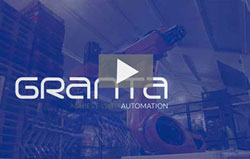
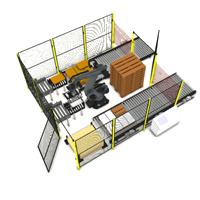
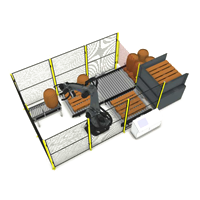
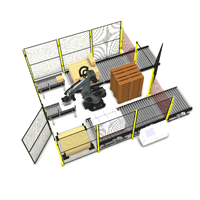
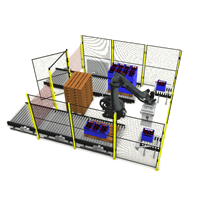
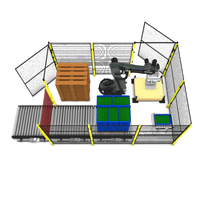

Warning: Undefined variable $aria_req in /var/www/granta-automation.co.uk/news/wp-content/themes/twentyten/comments.php on line 81
Warning: Undefined variable $aria_req in /var/www/granta-automation.co.uk/news/wp-content/themes/twentyten/comments.php on line 86